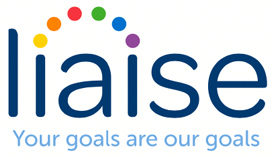‘Challenging behaviour’ is a broad term describing a range of behaviours that are difficult for parents, carers, teachers and other professionals. Here we explain how children with learning disabilities exhibiting challenging behaviour can be helped to overcome their difficulties.
What is challenging behaviour?
Challenging behaviour can include tantrums, hurting others, self-injury, throwing or breaking things, spitting, eating inedible objects, and running away. Behaviour is challenging if it is harmful and/or prevents the person from achieving everyday things, such as making friends or concentrating at school. Living with challenging behaviour can be exhausting and stressful. Normal activities, such as going to school or the park, can become fraught.
What is a learning disability?
Learning disability encompasses a range, including mild, moderate, severe, and profound or multiple. Severe learning disabilities are identified at birth or come to light early in childhood. Those with severe learning disabilities will have poor speech and social skills, find learning new skills difficult, and will need help with daily activities such as washing, dressing and eating.
Challenging behaviour and learning disability
It appears that challenging behaviour in learning disabilities occurs because children find communicating hard and language difficult to process; alternatively, something may be wrong, such as discomfort that a child cannot express differently. It can be linked to mental health issues.
Getting professional help
Services vary from area to area and it can take a while to get help. A multi-disciplinary team is essential. Your GP can refer you to the local Child and Adolescent Mental Health Service (CAMHS), which helps mentally troubled children and young people – the staff include social workers, nurses, psychologists and other professionals who offer support and intervention. Some areas have a local behaviour team for people with learning disabilities.
Speech and language therapists are also important. They help to find different ways for children to communicate and give families the tools to help them.
How to manage challenging behaviour Some simple strategies can help:
- Enable the child to express themselves.
- Help the person to do what they enjoy.
- Find coping strategies to reduce stress.
- Stay alert and try to anticipate problems.
- Create a firm support network of family, friends and professionals.
Improving communication
Intensive interaction sees the parent copy the child so that they understand how they can influence others. A communication book is a book of images that enables the child to point to their request, while picture exchange communication is a visual system that helps the child to understand that they need to interact with others.
Ideas for helping children’s communication:
- Make it visual. Understanding is improved when keywords are supported by photographs or gestures.
- When children are stressed, break down information.
- Give children time to formulate a response when asking questions and making comments.
- Give children the chance to communicate.
These techniques can make a significant difference in the lives of children experiencing behavioural problems.





